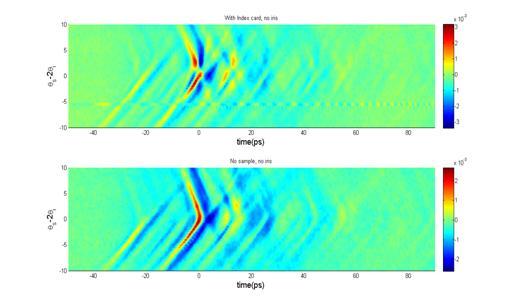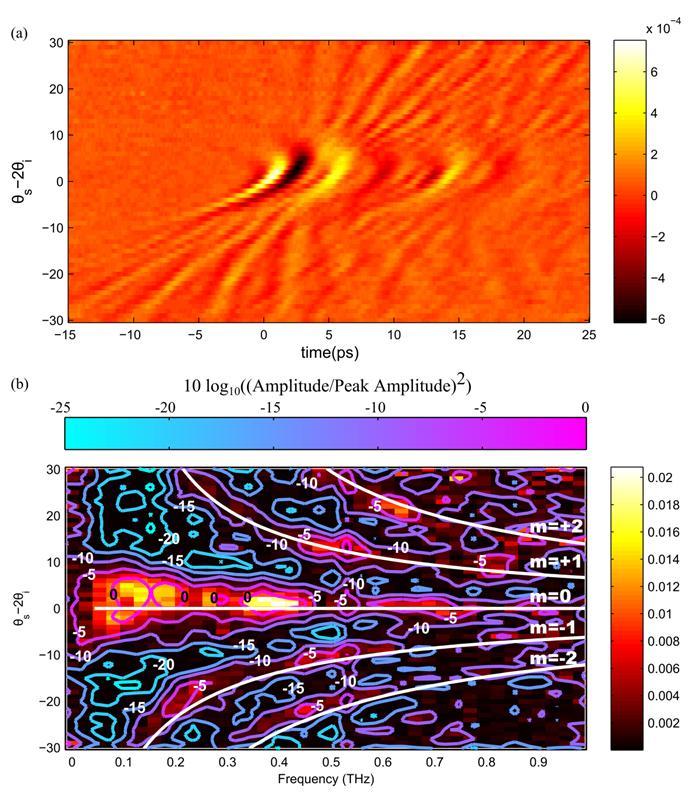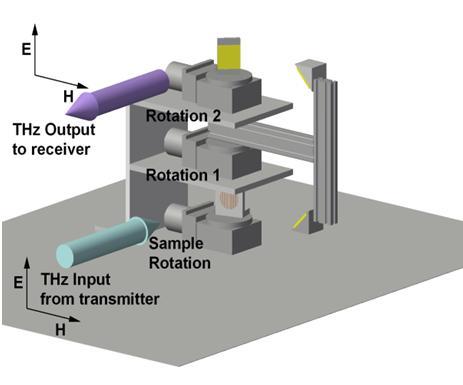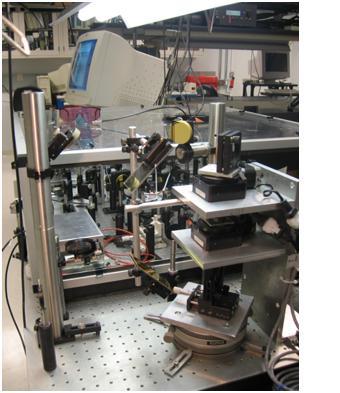Terahertz Imaging and Bi-Directional Reflection Function Measurements for Homeland Security (Archived)
Summary
Far-infrared (or THz, 25 to 300 micron wavelength) femtosecond laser methods are employed to generate high power (ca. 1 µJ) broadband pulses for far-field imaging applications. We are developing real-time pulsed imaging of objects as well as exploring THz hyperspectral imaging as a means to discover concealed threat materials relevant to Homeland Security. Measurement of the bi-directional reflection function (BRDF) at THz frequencies is being conducted to better understand pulse propagation and distortion effects after reflection from common concealment materials.
Description
We employ novel ultrafast laser terahertz techniques to generate high power picosecond pulses for reflection imaging applications. In one case, large area (2 cm x 2 cm) biased GaAs photoconductive switch produces THz pulses with sufficient bandwidth (0.3 to 2 THz) for far-field reflection hyperspectral imaging. High power pulses are also created using Lithium Niobate difference frequency generation with group velocity compensation. Reflected pulses are collected by a large area reflection telescope and the THz image is relayed onto a (1x1) cm2 ZnTe electro-optic image up-convering crystal. Weak 800 nm gating pulses from the Ti:Sapphire amplifier system (see Terahertz Apparatus/Facilities page) are used to extract the image imposed on the detection crystal and relayed onto a cooled CCD detector or room temperature lock-in detection microbolometer array for imaging.
In parallel to our THz spectroscopy efforts, we are also developing novel methods for real-time pulsed THz imaging of far-field objects and to perform hyperspectral imaging of inhomogeneous materials, threat agents and other species relevant to Homeland Security needs. This wavelength range is particularly attractive because THz radiation readily transmits through most plastics, cloth, papers and other non-metallic, low-density materials. Detailed analysis of high power source and THz pulse propagation is required as well as specialized collection optics to optimize image resolution. Spectral characterization of materials in an image scene at several meter reflection distances is being explored.


In earlier imaging experiments (circa 2003-2008), it was found that near-field imaging (<1 meter) of reflective objects retained expected resolution at THz frequencies. However, objects placed at ca. 3 meters from the generator produced distorted images, probably arising from pulse interference or depolarization effects. To explore these possibilities, we directly measured and modeled GHz through THz BRDF for a variety of concealment materials. Since the BRDF has not previously been measured in this wavelength region, our new results were compared to conventional BRDF models to test their applicability and accuracy for predicting image quality for hyperspectral and related applications.


These investigations use a state-of-the-art, kHz repetition-rate amplified 45 femtosecond pulsed laser for broadband (0.2-2.5) THz GaAs antenna generation and detection using a ZnTe electro-optic crystals. See the Terahertz Apparatus/Facilities page.

